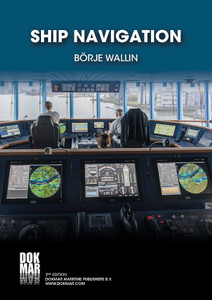
Everyone might have an idea about what constitutes a stable personality, but actually defining it is difficult. The same applies to the concept of a stable ship. Nevertheless, the term ‘stability’ is still applied to all types of vessels in many regulations.
Stability affects the safety of the ship and its crew, as well as the environment. Therefore, it is essential that each crew member understands the meaning of stability, irrespective of their position or which type of ship they are working on.
In this book, the concept of stability is defined and visualised in a way that makes it accessible to everyone. Some topics are dealt with in detail, but they are still easy to understand, even without prior knowledge of the subject.
1. INTRODUCTION
1.1 Introduction
1.1.1 Definition of stability
1.1.2 Why define stability? Forces and moments
1.1.3 Importance of stability
1.1.4 Important factors for stability
1.1.5 Who is responsible for stability?
1.2. Vectors, forces (F, f ), moments (m) and units
1.2.1 Explanation of terms
1.2.2. Effect of a force
1.2.3. Moments examples
1.2.4 Forces and moments examples
1.2.5 Volume
1.2.6 Density (ρ) and specific weight (γ)
1.3 Flotation
1.3.1 Archimedes
1.4 Displacement
1.4.1 Establishing the displacement
1.5 (Reserve) buoyancy
1.6 Displacement of volume
1.6.1 Dimensions
1.7 Volumes and weights
1.8 Hull forms (Lines plan)
1.9 The shape of the ship
1.9.1 Hull form coefficients
1.10 Bonjean curves
1.11 Positions of the ship
1.12 Proportions
1.13 General arrangement
1.14 Plimsoll and deck line
1.14.1 Loadlines
1.14.2 Ships carrying timber deck cargo
1.14.3 Dredgers
1.14.4 International Convention on Load Lines
1.15 Relationship between the observed draft and displacement
1.15.1 Tons / cm
1.16 Permanent marks on the ships' shell plating
1.17 Chart of zones and seasonal areas
Exercises
1.18 Reference points explained
1.18.1 Point K
1.18.2 Point B
1.18.3 Point G
1.18.4 Point M and N
1.19 Calculation of the initial position of point M
1.19.1 KM versus draft (T)
1.20 Abbreviations used
1.21 Form and weight stability
1.21.1 Form stability
1.21.2 Weight stability
1.22 Relation between buoyancy and gravity
1.22.1 Ship in equilibrium in calm water
1.22.2 The ship on a sloping water surface.
2. TRANSVERSE STABILITY
2.1 General
2.1.1 Height of G above the keel
2.2 Determination of G
2.2.1 Conservation of momentum
2.2.2 Final moment
2.2.3 Movement of centre of gravity
2.2.4 Horizontal movement of G
2.2.5 Consequences of incorrect loading
2.2.6 Stiff and tender ship
2.3 Inclining experiment
2.4 Oscillation test
Exercises
2.5 Curve of static stability
2.5.2 The righting arm
2.5.3 Determining the righting arm GZ
2.5.4 The design of the curve
2.5.5 Determining the area under the curve
2.6 Stability regulations
2.6.1 Stability regulations for all ships
2.6.2 Examples of unacceptable stability curves
2.6.3 Exceptions to stability criteria
Exercises
2.7 Comparison of ships' forms
2.8 KG max
2.9 List
2.9.1 Shifting of a weight
2.9.2 Free surface correction
Exercises
2.9.3 Heavy lift
2.9.4 Bulk cargo
Exercises
2.9.5 Effect of wind on the ship
2.9.6 Effect of wind on stability
2.9.7 Heel due to turning
2.9.8 Summary
2.10 Mathematical explanation of the stability curve
2.10.1The wall sided formula
3. DRAFT AND TRIM CALCULATIONS
3.1. Draft and trim calculations
3.1.1 The waterline's Centre Of Flotation (COF)
3.1.2 Moment to change trim per unit
3.2. Calculation of trim
3.2.1 Determining trim difference with weights
3.2.2 Determining trim difference of total ship
3.2.3. Distribution of trim forward and aft
3.3 Corrections to the draft readings
3.4 Draft survey
3.4.1 Reading the draft
3.4.2 Correcting the draft
3.4.3 Hogging, sagging and torsion
3.4.4 Trim corrections (first + second trim corr.)
3.5 Squat
Exercises
4. DAMAGE STABILITY
4.1. Introduction
4.2. Evolving points regarding damage stability
4.2.1 Floodable length
4.2.2 Deterministic damage stability
4.2.3 Probabilistic damage stability
4.3. Calculation methods due to damage
4.3.1 Constant displacement
4.3.2 Loaded weight
4.4. Determining damage stability
4.4.1 Damage stability prognosis for the actual voyage
4.4.2 Damage stability calculations
5. STABILITY WHILE UNDERWAY
5.1 Introduction
5.2 Dynamic stability while underway
5.3 Loss of quasi-static stability
5.4 Loss of dynamic stability
5.4.1 Dynamic rolling with coupled ship motions
5.4.2 Parametric rolling
5.4.3 Resonant rolling
5.4.4 Impact excitation
5.5 Broaching
5.5.1 Overtaking waves (low speed)
5.5.2 Low frequency, large amplitude yaw motions
5.5.3 Broaching caused by a single wave
5.5.4 Surfing of the ship
5.5.5 Surfing and bow diving
5.5.6 Surf on the front slope of a steep wave
5.5.7 Coupled pitch, roll and yaw instability at high speed
5.5.8 Dynamic stability assessment
5.6. Heavy-weather guidance
6. DRYDOCKING / RUNNING AGROUND
6.1 Ship stability while docking
6.2 Running aground
7. SPECIAL TYPES OF SHIPS
7.1 Sailing vessels
7.1.1 Stability of sailing vessels
7.1.2 Stability in relation to hull form
7.1.3 Damping effect of the sails
7.1.4 Stability requirements
7.1.5 Active stability
7.2 Catamarans / swath
7.2.1 Catamarans
7.2.2 Swath
7.3 Crane ships
7.4 Fishing vessels
7.5 Supply ships
7.6 Dredging vessels
7.6.1 The process and characteristics of stability
7.7 Submersible pontoon
7.8 Submarines
8. STABILITY SOFTWARE
8.1 Introduction and history
8.2 Arithmetic functions
8.3 Tools within loading software
8.3.1 Loading tools
8.3.2 Loading assessment according to regulations
8.4 Standards and requirements
8.4.1 Hardware regulations
8.5 Examples of loading software
Questions:, general
Exercises
Index
Abbreviations
Credits: photographs and illustrations
- Number of Pages:
- 190
- Book Height:
- 297 mm
- Book Width:
- 210 mm
- Author:
Klass Van Dokkum, Hans Ten Katen, Kees Koomen and Jakob Pinkster
- Published Date:
- October 2022
- Preview:
- Yes
- Publication Date:
- October 2022
 Witherbys.com
Witherbys.com





